Lacplesis Technology is a group of three projects that explore the balance between two paragraphs of the article 27 of the Universal Declaration of Human Rights:
Everyone has the right freely to participate in the cultural life of the community, to enjoy the arts and to share in scientific advancement and its benefits.
Everyone has the right to the protection of the moral and material interests resulting from any scientific, literary or artistic production of which he is the author.
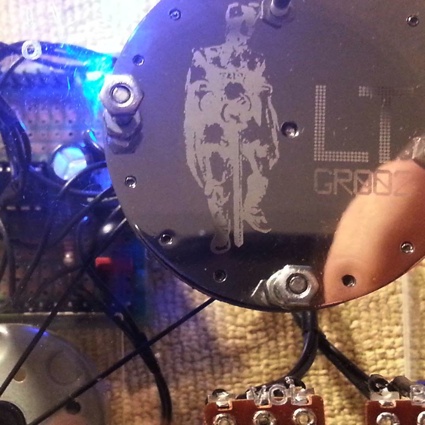
Lacplesis Technology was created by Andris Vetra and Artis Kupriss (in collaboration with programmer Viesturs Kavacs) with the aim of looking for evil in copyright issues.
The project bears the name of Lāčplēsis, a hero in Latvian mythology. A very interesting hero! Of course he did the usual: fighting against a giant and then against monsters with various numbers of heads, rising a castle into the air, but i liked the fact that the Latvians are celebrating him because he battled anyone plotting to replace Latvian old gods with Christianity.
The Lacplesis Technology project comprises 3 prototypes. The first one is LT-ML002, a pirated music legislation software that detects all the .mp3 files stored in your portable USB media device, cuts the songs into tiny pieces and rearranges them randomly into a new unique composition.
LT-GR002 is an alternative media player which can be used in public spaces for both noncommercial and commercial purpose without any fee. A mechanical clapper regulates the tempo and volume and creates different soundscapes. The device can be used with headphones or speakers.
Finally, E1-FLAX investigates how pirated music affects living organisms. Scientists from University of California even succeeded to affect work of plants stomata (which are responsible for evaporation of water from plants) with help of high frequency sounds.
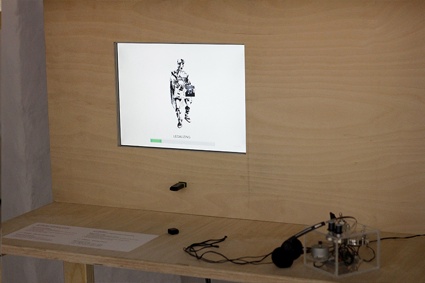
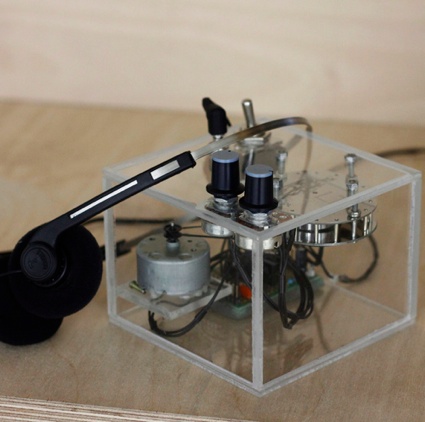 LT-GR002
LT-GR002
I discovered Lacplesis Technology during the final day of the Renewable Futures Conference organised at Liepaja University’s Art Research Lab. Young graduates were presenting their work and i thought that this one really stood out. Andris talked to me about the project:
Hi Andris! How small do the snippets of files made by LT-ML002 have to be for the work to be ‘legal’?
To find that out we called Latvian authors’ society AKKA / LAA. Technically it is illegal to take and/or make changes with anything at all without the authors’ permission. If something is recorded and put under copyright no one can use it without permission. So our legalization software does that illegally and the actual result is not really legal but the idea is to make the result hard to recognize for responsible institutions. But snippets taken by LT-ML002 are approximately 10 to 100 milliseconds long. After the legalization process, most of them are changed in time scale as well (made faster or slower) so the length of the new composition is different.
Have you ever received any feedback from musicians whose work had been rearranged by your software?
Unfortunately, we have not received any feedback from musicians. But reasons for that are quite clear. This work has been exhibited only once for wider public and not too many people carry flash drives with music in them so those new compositions have not spread widely yet. But fortunately we are working on online version which will be available in beginning of this autumn hopefully.
Is there any way we can get the software?
We are not sure about download version but as I said there will be online version available for all who can access internet connection.
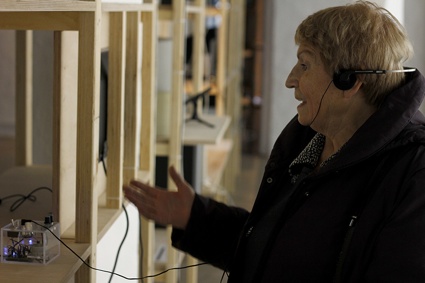
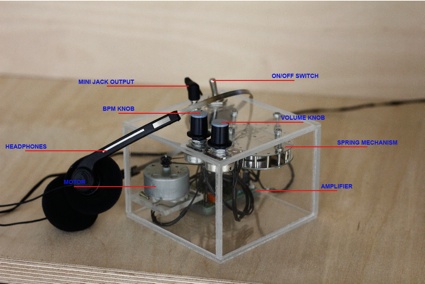 LT-GR002
LT-GR002
Could you explain was LT-GR002 is made of? Is it just an Mp3 player dismantled and put inside a transparent box?
LT-GR002 is completely analog media player. It produces sound out of mechanical mechanism. Spring rotates and hits metal bars, contact microphone attached to mechanism receives the sound and sends it to mini jack output through amplifier. See picture 1 attached.
LT-GR002 can be used in public space even for commercial purpose. What is the content it plays then? Where does it come from?
LT-GR002 plays analog dance music.
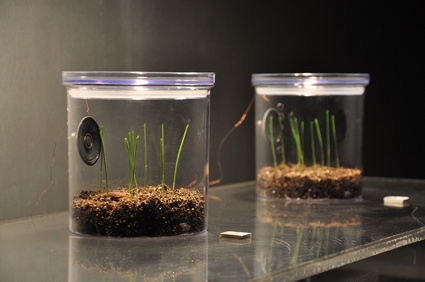 LT E1-FLAX
LT E1-FLAX
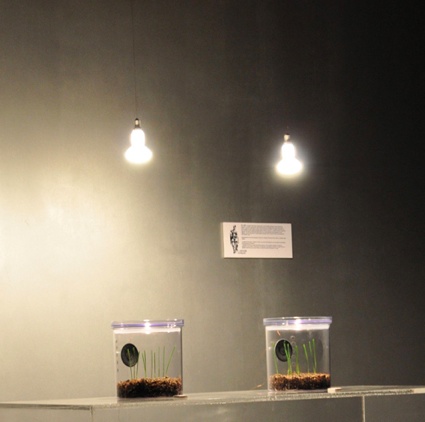 LT E1-FLAX
LT E1-FLAX
I am also very curious about LT E1-FLAX. Could you explain the experiment, the conditions and process, the observations and results?
There are quite a lot of research that proves that music can affect growth of plants and other organisms. In the experiment LT E1-FLAX, we researched how pirated music affects plant growth compared to non pirated/legal music. In this experiment we made two identical containers with the same soil, the same seeds of flax (10 in each container), identical speakers and provided them with the same amount of water and light. The only difference was the content played through the speakers. For the experiment we used old song of composer Raimonds Pauls called “Zilie lini (Blue Flax)” in one container we played the legal version bought in an online store but in the second one, we played a copy of it that technically is pirated file. Results were quite similar though in the container with pirated music the plants grew little bit taller.
Lacplesis Technology is exploring balance between section 1 and section 2 of article 27 of the Universal Declaration of Human Rights. Do you know of successful music models that achieve this sort of balance?
Yes, there are positive examples around the world. A good example is Pay What You Want pricing strategy. The loudest example of this was Radio Head’s album In Rainbows released under this pricing strategy. Also I liked this Techno Brega music industry in Brazil where music releases are used more as advertisement for live performances. The last one is documented in a good documentary related to those questions called “Good Copy Bad Copy“.
Good Copy Bad Copy, 2007
I was wondering how you (as someone who grew up among debates about copyrights in music) saw where the discussions are leading to. Do you have much hope that things will change? have you, for example, observed that younger musicians are more likely to fight for a debate around copyrights than older generations for example?
We would not say that we have grown up among debates about this. This is more recent topic of our interest as young artists. This project of course is based on idealistic hope that some day it will be possible to deal with those problems. And that is the reason we chose this mythological hero Lacplesis to represent our project as he embody this romantic hope of victory of good over bad forces and golden age coming afterwards.
Thanks Andris!
